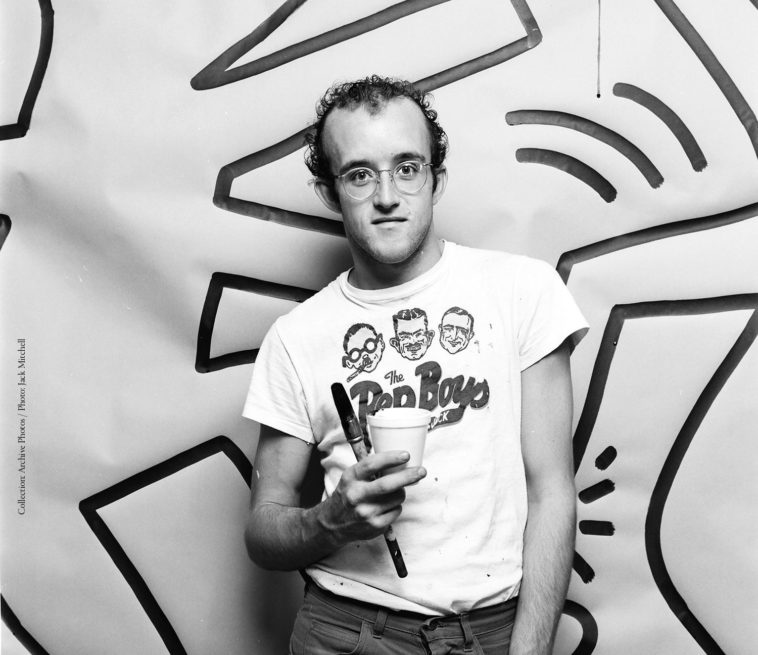Early Life and Influences of Keith Haring
Keith Allen Haring was born on May 4, 1958, in Reading, Pennsylvania. Growing up in nearby Kutztown, he developed an early interest in art, largely influenced by his father, an amateur cartoonist. This early exposure to the visual arts was the foundation of his unique artistic language. Haring’s formative years were also marked by popular culture phenomena, from TV cartoons to street culture, which would later heavily influence his artistic style.
The Emergence of a Unique Style in the New York Art Scene
In 1978, Haring moved to New York City to attend the School of Visual Arts. It was in the bustling streets of New York that he found his true calling. Immersing himself in the vibrant street culture, Haring began to develop his now-iconic style. He was drawn to the graffiti art that adorned the city’s subway stations, seeing it as a powerful form of public communication.
Breaking Barriers: Subway Drawings and Public Art
Haring’s breakthrough came with his subway drawings, created with white chalk on the black paper used to cover unused advertising panels. These drawings were not just art; they were acts of social engagement. They brought art to a wider audience, far beyond the confines of galleries and museums. His works, characterized by bold lines and bright colors, depicted a range of themes, from social activism to abstract concepts like birth, death, and war.
Social Activism Through Art
Haring was deeply committed to social activism. His work often reflected his concerns about issues like apartheid, the crack cocaine epidemic, and the AIDS crisis. He established the Keith Haring Foundation in 1989 to support organizations that address these issues. His artwork ‘Silence=Death,’ depicting a figure in a stance of protest, became a symbol of the AIDS movement.
Legacy and Impact on Modern Art
Keith Haring’s untimely death on February 16, 1990, due to AIDS-related complications, left a void in the art world. However, his legacy endures. His work is celebrated for its vibrant energy, its accessibility, and its potent social messages. Haring transformed the concept of what art could be and who it could reach. Today, his works are displayed in major museums worldwide, and his influence can be seen in various art forms.
Conclusion: Remembering Keith Haring
Keith Haring’s contribution to art and society remains profound. His unique visual language, created out of simple lines and bright colors, spoke volumes about issues that mattered. He showed that art could be a powerful tool for social change, a legacy that continues to inspire artists and activists alike.





